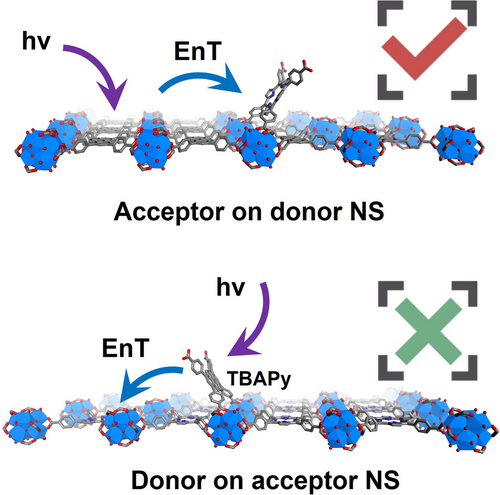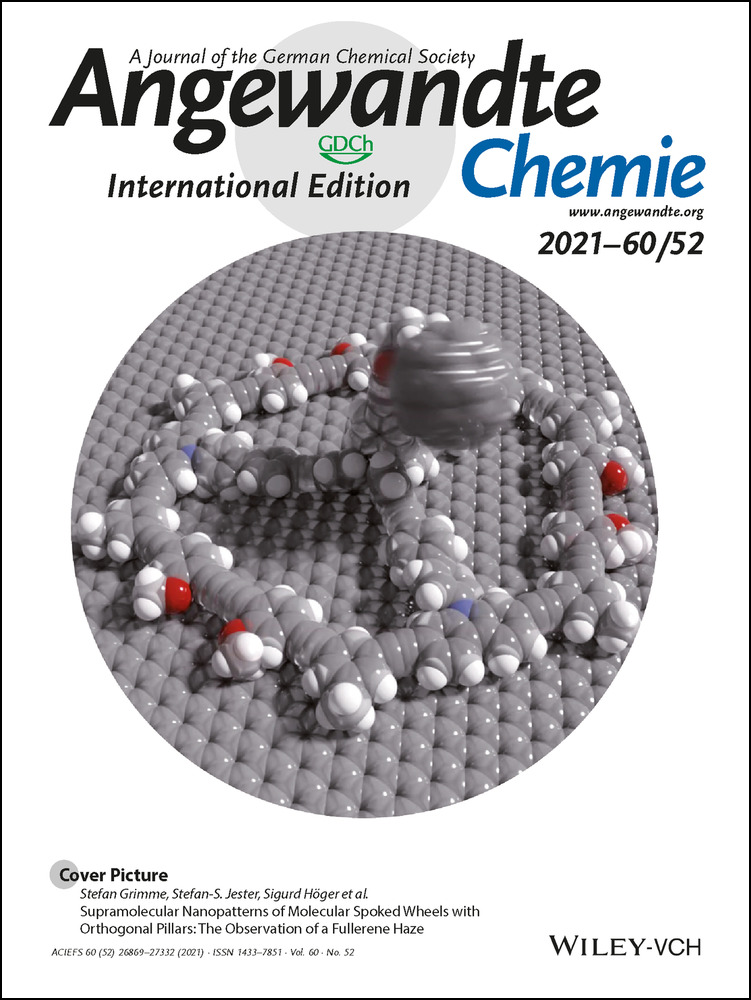Precise Spatial-Designed Metal-Organic-Framework Nanosheets for Efficient Energy Transfer and Photocatalysis
Graphical Abstract
Metal-organic frameworks (MOFs), especially MOF nanosheets (NS), are very good candidates for photocatalysis. In this work, two types of donor–acceptor MOF NSs were prepared, including an acceptor-on-donor NS and a donor-on-acceptor NS. It was found that the acceptor-on-donor NS type has very good performance even with fewer catalytic centres. This may help future research to design photocatalysts.
Abstract
High-efficiency photocatalysis in metal-organic frameworks (MOF) and MOF nanosheets (NSs) are often limited by their short-lived charge separation as well as self-quenching. Here, we propose to use the energy-transfer process (EnT) to increase charge separation, thus enhancing the catalytic performance of a series of MOF NSs. With the use of NS, the photocatalyst can also be well isolated to reduce self-quenching. Tetrakis(4-carboxyphenyl) porphyrin (H4TCPP) and 1,3,6,8-tetrakis(p-benzoic acid)pyrene (H4TBAPy) linkers were chosen as the acceptor and donor moieties, respectively. Accounting for the precise spatial design afforded by the MOF NSs, the donor and acceptor moieties could be closely positioned on the NSs, allowing for an efficient EnT process as well as a high degree of site isolation. Two templates, donor-on-acceptor NS and acceptor-on-donor NS catalysts, were successfully synthesized, and the results show that the second one has much enhanced catalytic performances over the first one due to site-isolated active photocatalysts.





